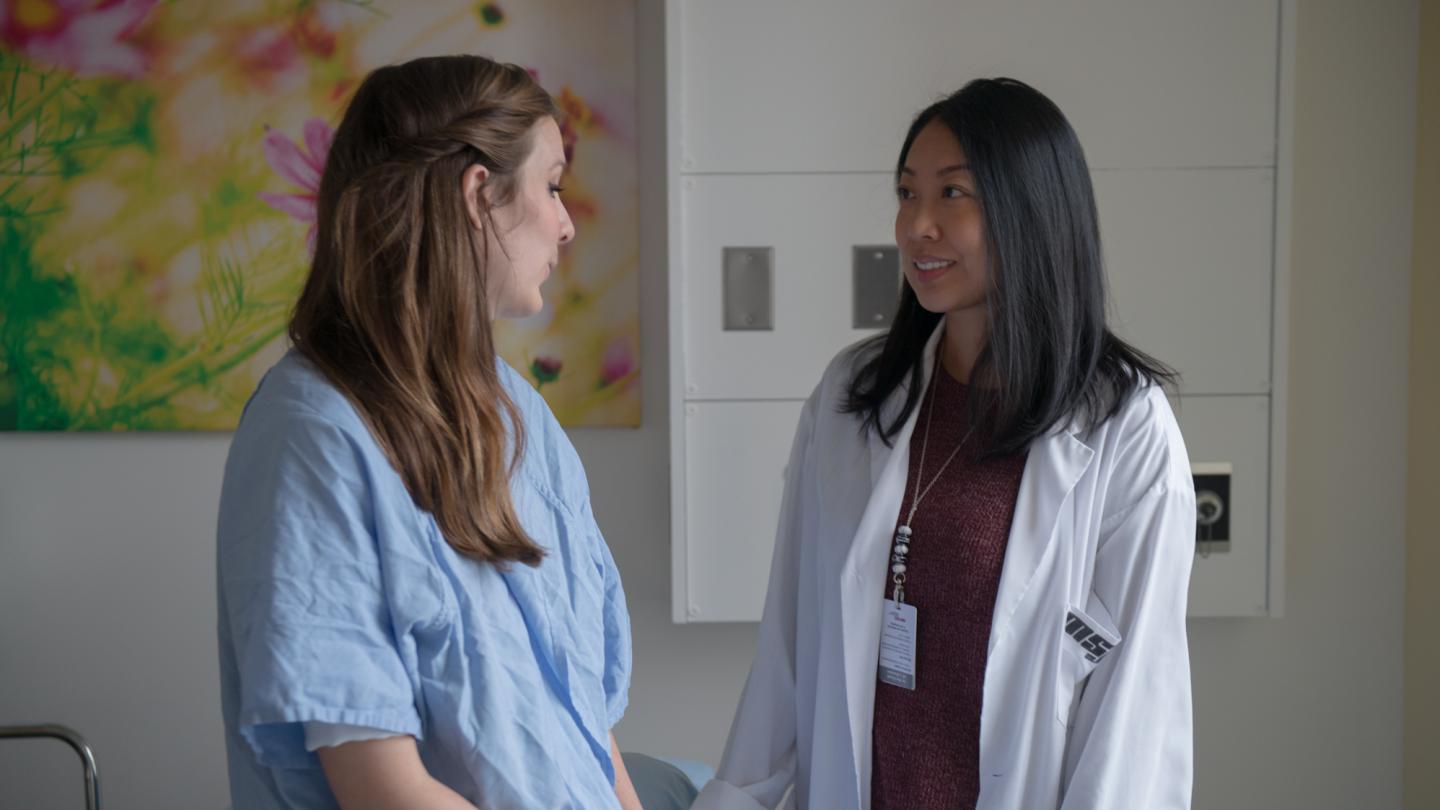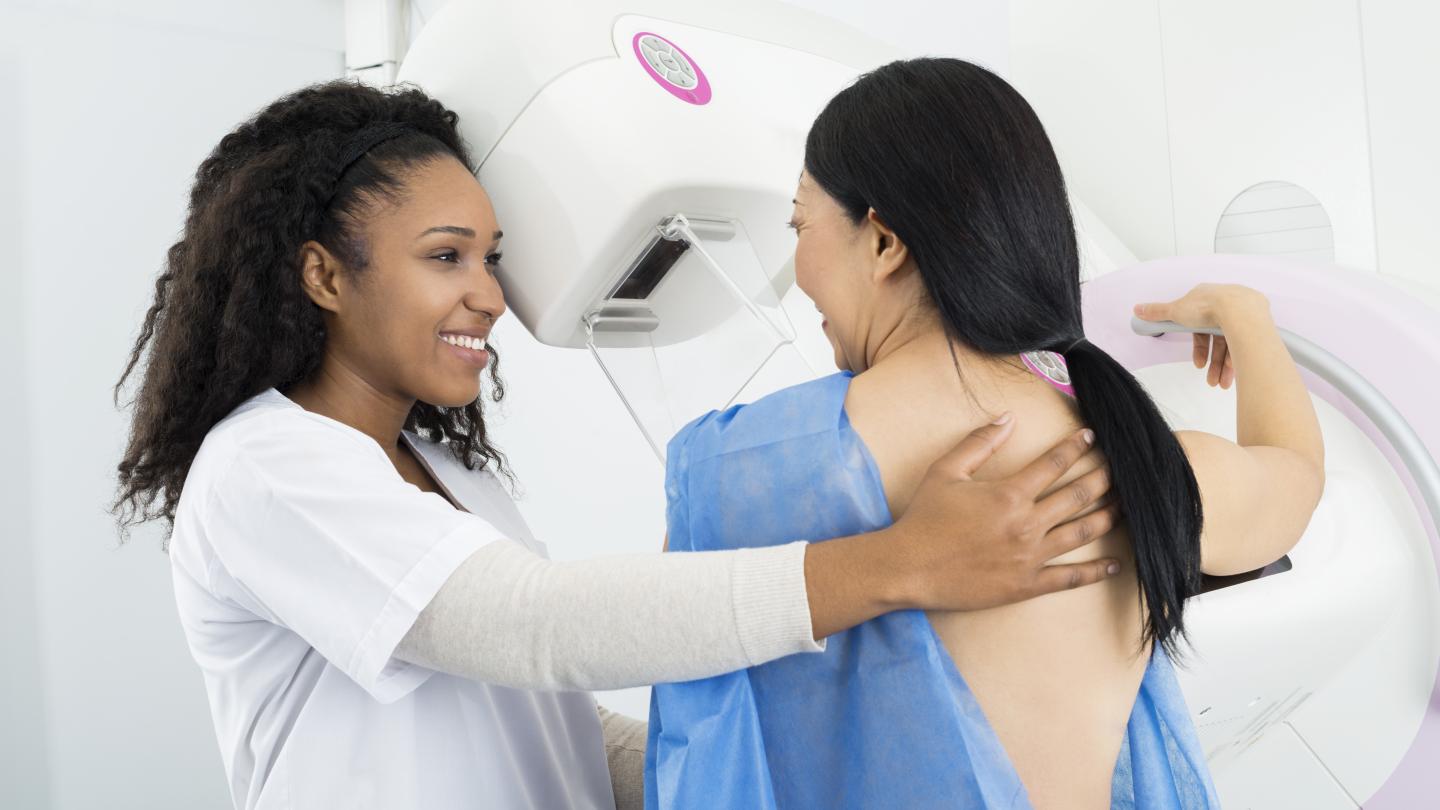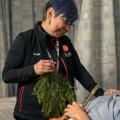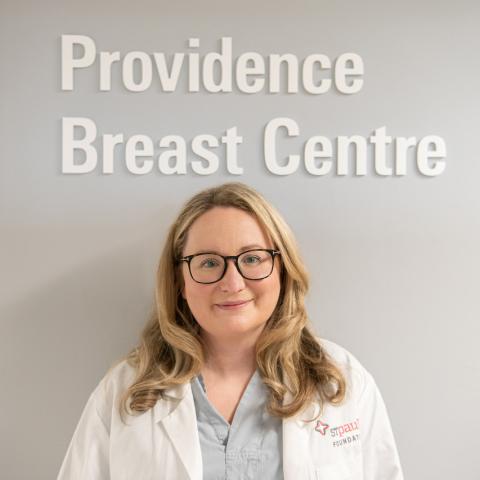Mammography
An overview of screening and diagnostic mammography services at Mount Saint Joseph Hospital.
Overview
Mammography is a type of x-ray that can help detect cancer and other breast diseases. It is both a diagnostic and screening tool. A mammogram is the image that is produced during mammography.
Screening mammograms are for people with no symptoms of breast cancer (no apparent breast problems). In British Columbia, screening mammograms are available for women 40 years and older. You do not need a doctor's referral. You can schedule your own screening mammogram through BC Cancer Screening.
High risk patients may be eligible for screening mammograms as early as age 30 with a doctor’s referral.
If you are experiencing breast symptoms (e.g., lump or thickening, bloody or clear nipple discharge), you should see your health-care provider immediately. They will decide if you need a diagnostic mammogram or other testing. Diagnostic mammograms are ordered by a doctor to look at an area of concern in the breast. This may lead to more tests such as an ultrasound or a biopsy.

Preparing for the test
Screening and diagnostic mammograms
To get the most out of your appointment and to have a smooth experience, here are some tips for planning your visit:
- If you do not speak English and need an interpreter (at no cost to you), please let us know in advance.
- If you need a sign language interpreter (at no cost to you), please let us know in advance.
- Please do not wear scented products. All Providence Health Care’s hospitals and residences are scent-free environments.
- Try to schedule an appointment when your breasts are least sensitive (e.g. within 10 days of your last period).
Some people find it helpful to avoid caffeine several days before an exam.
On the day of the test
Screening and diagnostic mammograms
- Do not use deodorant, powder, creams, or lotions on the day of the appointment. These products can leave a residue that can make it difficult to read your mammogram.
- During the exam, the technician will ask you to undress from the waist up so they can take a picture of each of your breasts. Some people find that wearing a shirt with buttons in the front is more comfortable during the exam. If you are wearing a shirt with buttons, the technologist will ask you to take one arm out of your shirt so that they can properly position you for your mammogram. This will be repeated on the other side.
During the test
Screening and diagnostic mammograms
Your technologist will ask you questions about your breast health, past breast surgeries or biopsies, and your family history. This information is very important for interpretation of your mammogram and will be documented in your confidential history file for the radiologists.
Screening Mammography appointments: Your technologist will ask to measure and document your height and weight. This is for research purposes. You may decline if you wish.
The technologist will then proceed to the mammogram examination where she will place your breast in a special x-ray machine. A plastic plate will be pressed slowly to compress your breast and hold it in place for a few seconds.
You will feel some pressure on your breast for a few seconds during the x-ray. Compression is necessary to spread the breast tissue and eliminate motion, which may blur the picture. This may be uncomfortable but usually lasts no more than 10 seconds. Let the technologist know if you experience pain. She can work with you to try to make your appointment more comfortable.
Four pictures are taken, two of each breast. The technologist will check the pictures to make sure they are of good quality for the radiologist to read. If needed, the technologist may take additional pictures.

After the test
Screening mammogram
- Screening appointments are approximately 10 minutes long. You may leave the screening centre right after your images are taken.
- You will receive your screening results in approximately three weeks. We will also send a copy to your health-care provider.
Diagnostic mammogram
- Diagnostic mammography appointments (for patients with breast symptoms) are at least 20 minutes long. Some appointment may take up to an hour or more. You may also receive a breast ultrasound.
- At most diagnostic mammography appointments, your technologist will check the mammogram images with a radiologist and take additional images as necessary before you leave.
Support for Indigenous Peoples
The Indigenous Wellness Liaison Team is here to support your health journey. Team members offer cultural support and healthcare advocacy. Learn more below or call them at 604-682-2344,62937 or email IWL@providencehealth.bc.ca.
Education & resources
Find helpful information related to mammography.
Find this service near you
Medical & professional referrals
In general, for continuity of care and to avoid duplication of breast imaging studies, it is best to refer patients to a single comprehensive facility for all breast imaging. Please try to refer patients back to the facility where their previous breast imaging was performed.

